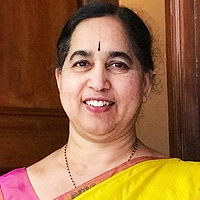Prognosis of peripartum cardiomyopathy in sub-Saharan Africa (Burkina Faso South-West PPCM register)
Published on: 19th May, 2020
OCLC Number/Unique Identifier: 8605481207
Peripartum cardiomyopathy is one of the curable cardiomyopathy. It’s a severe and frequent disease arising among women of childbearing age. Its evolution in the long-term among some patients leads to chronic heart failure. Our study aims to determine from a prospective cohort, the factors associated with the non-recovery of myocardial function upon 12 months of diagnosis. Sociodemographic, clinical and echocardiographic data were collected at the time of diagnosis and then in months 3, 6 and 12. The outcome was the non-recovery of myocardial function at one year, defined by a left ventricular ejection fraction (LVEF) below 50%. 60 patients were analyzed after 12 months of follow-up. Mortality was about 13.3% and recovery rate of myocardial function reached 42.3%. After logistic regression, delay diagnosis and observance were the factors related to non- recovery of myocardial function.
Unusual and severe peripartum cardiomyopathy: A case report
Published on: 5th May, 2021
OCLC Number/Unique Identifier: 9124847141
Peripartum cardiomyopathy (PPCM) is a relatively rare cardiac disease that manifests in the final stage of pregnancy and in the first months after delivery in women with no preexisting heart disease. Many etiological processes have been suggested: viral myocarditis, abnormal immune response to pregnancy, excessive prolactin excretion, prolonged tocolysis and a familiar predisposition to PPCM. Its diagnosis is often delayed because its symptoms, which include fatigue, dyspnea and palpitations are nonspecific. For this reason the diagnosis of PPCM is still made by exclusion of other etiologies. The long-term prognosis, once the acute phase is over, is a function of myocardial damage, this varies from complete functional recovery to chronic HF. The outcome of PPCM is highly variable with an alevated risk of fetomaternal morbidity and mortality. We report a serious case of a 40 years old female with biamniotic bicorionic twin pregnancy (PMA) who delivered by caesarean section and developed acute PPCM on post-operative. Symptoms occurred two hours after an intramuscular injection of two vials of methylergonovine the same day of cesarean delivery. These manifested in sudden tachypnoe, tachycardia and the appearance itchy maculopapular rash on her chest. On further evaluation, ECHO revealed cardiomegaly with reduced ejection fraction (< 15%). The case was successfully managed by a multidisciplinary team, using drugs like levosimendan and cabergoline, which rapresent emerging strategy in this clinical context.
Diagnosing Peripartum Cardiomyopathy in a Resource-Limited Setting, a Clinical Perspective: Case Report
Published on: 29th March, 2024
Peripartum cardiomyopathy is a rare case of heart failure with reduced ejection fraction and is considered a diagnosis of exclusion. The symptoms of heart failure in patients with peripartum cardiomyopathy can mimic the physiologic conditions of normal pregnancy. In an acute decompensated state, PPCM can present with acute severe upper abdominal or epigastric pain. We are presenting a 24-year-old female with no personal or family history of heart disease and no identifiable risk factor for PPCM. Based on her initial presentation in the emergency department, a diagnosis of acute severe pancreatitis was sought, and she was referred to the Intensive Care Unit. After further evaluation of the serological tests and imaging, she was eventually diagnosed as a case of PPCM. We emphasize the rare nature of the disease with a diverse presentation which poses a diagnostic challenge, especially in a resource-limited setting where advanced diagnostic tools may be restricted and socioeconomic condition poses a barrier to further patient evaluation. This case exemplifies the infrequent occurrence and atypical manifestation, presenting a learning opportunity for future clinicians.
Outcome of Patients Presenting with Peripartum Cardiomyopathy in a Tertiary Care Center of Nepal
Published on: 29th May, 2024
Purpose: Peripartum cardiomyopathy is a rare life-threatening cardiomyopathy of unknown etiology with significant maternal morbidity and mortality. It causes heart failure due to left ventricular systolic dysfunction with or without left ventricular dilatation in the last month of pregnancy up to 5 months postpartum in previously healthy women. We aimed to determine short-term outcomes of peripartum cardiomyopathy clinically as well as in terms of left ventricular systolic function and to study the clinical profile and associated risk factors.Patients and methods: A prospective observational study was carried out in the Department of Cardiology of Manmohan Cardiothoracic Vascular and Transplant Center, Institute of Medicine, Kathmandu, Nepal, from July 2018 to January 2022. All the patients with peripartum cardiomyopathy who presented to the department of cardiology were enrolled in the study and re-evaluated with echocardiography at 6 months.Results: A total of 68 women met the inclusion criteria. The mean age was 28.38 ± 5.5 years (range 19 to 44 years). The most common clinical presentation was dyspnea followed by lower limb edema. Six (8.8%) patients presented during the last month of pregnancy whereas 62 (91.2%) patients presented in the postpartum period. The mean left ventricular ejection fraction on presentation was 30.01 ± 8.54. A full recovery was observed among 60.29% at 6 months. The mortality rate was 4.41%.Conclusion: Timely diagnosis and management of peripartum cardiomyopathy with standard therapy for heart failure leads to better recovery of left ventricular systolic function.
















